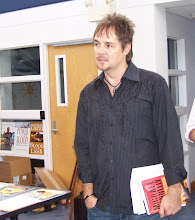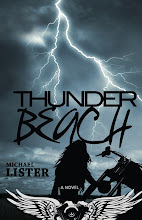
This weekend, I sat at a bar next to a lovely lady from Pittsburgh. I know she was from Pittsburgh because when I ordered my steak Pittsburgh style she said, “What’s that? I ask because I’m from Pittsburgh.”
We talked for a while about the differences between the North and the South in general and Pittsburgh and Panama City in particular, which was nice—spontaneous conversation is one of the reasons I sit at the bar when I eat alone.
We talked about how nice and friendly most folk around here are, and, given that, how shocking the racism is, and then she said, “We don’t have culture here, but we have the beaches.”
And I was like whoa, now. Wait just a minute, Pittsburgh. We have culture.
I had just returned from a book signing at Seaside. My new novel, “Double Exposure,” like all my books, is about this area. That’s culture. Jason Heddon and the college’s wonderful theater department are performing a play of it in November. That’s culture. Seaside has the REP and Sundog Books and art galleries. That’s culture.
Wewahitchka has The Tupelo; Apalach, The Dixie. That’s culture.
Last weekend, we had the 10th Annual Gulf Coast Writers Conference with #1 New York Times Bestselling author, Michael Connelly—and many other talented authors, agents, and editors besides. That’s culture.
Panama City has the VAC—the wonderful and only-getting-better VAC thanks to Linda MacBeth and the invested staff and volunteers who are working so hard. That’s culture.
We have Heather Parker’s Art Coop and Bay Arts Aliance and the Marina Civic Center (and the highly diverse and entertaining shows of this summer’s Backstage Pass series) and The Martin and Shakes By the Bay. And that’s culture.
We have local writers and photographers and painters and filmmakers and poets and musicians. And all of that is culture.
We have “The News Herald” and “The Entertainer” to cover all this culture, writers and editors like Jan Waddy and Tony Simmons, who work hard to keep the community informed about all the cultural haps and local artists’ works. Speaking of which, have you noticed how amazing “The Entertainer” looks? And how it keeps getting better and better. Well done, Jan!
We have a lot of good radio stations, but my favorite, WKGC, 90.7, is a great place for culture—music, arts, literature, news, and jazz and blues as good as any being broadcast anywhere.
This past weekend, I was out and about for Thunder Beach, and saw many displays of culture—including very cool performances by Twice Daily at Pineapple Willy’s and Steve Wiggins and friends at Edge Water.
Beauty and art and culture, like love, are actually all around. Easy to miss, but there nonetheless.
And if all this weren’t enough, we have the enduring excellence of the Kaleidoscope Theatre. On Sunday afternoon, I sat in a nearly full house, and saw a powerful performance of “To Gillian on Her 37th Birthday,” directed by Jason Blanks and featuring a talented cast of local actors, including Martin Hendrickson, Frankie Hudson, Tanya Ericson, and the warm, charming, funny Ray H. Stanley.
We have all this culture—and a whole lot more (I’m just recounting what I’ve seen recently, not attempting to be exhaustive).
We have all this, plus we have the world’s friendliest people and most beautiful beaches, the majestic Apalachicola River, the acres and acres of pine and oak and cypress of Florida’s Great Green Northwest and the splendid species—endangered and not—who call it home.
We have all, ALL this, AND we don’t ever have to shovel snow!
You might say we have it all.
But you’d be wrong. We could use more culture—more art, more literature, more concerts and plays and exhibits. And we could stand less thoughtless, tacky, greedy development, less racism (and sexism and homophobia and all other forms of xenophobia and ignorance so often on display), less pollution and more protection of the very land and animals and people that make this a place, for me, worth writing about and fighting for.
We may not have it all. But we do have a terrible, awful lot to be grateful for—culture and natural beauty.
Take a moment and thank those you see making art, beauty, and love. Thank them for the sacrifices, for their steadfastness to their vision, for working day jobs so they can, for creating and producing when they’re exhausted, for enriching our community, for doing all this—and constantly hearing there’s no culture in our area. And for this last, you may want to give them a big ol’ bear hug, too.















